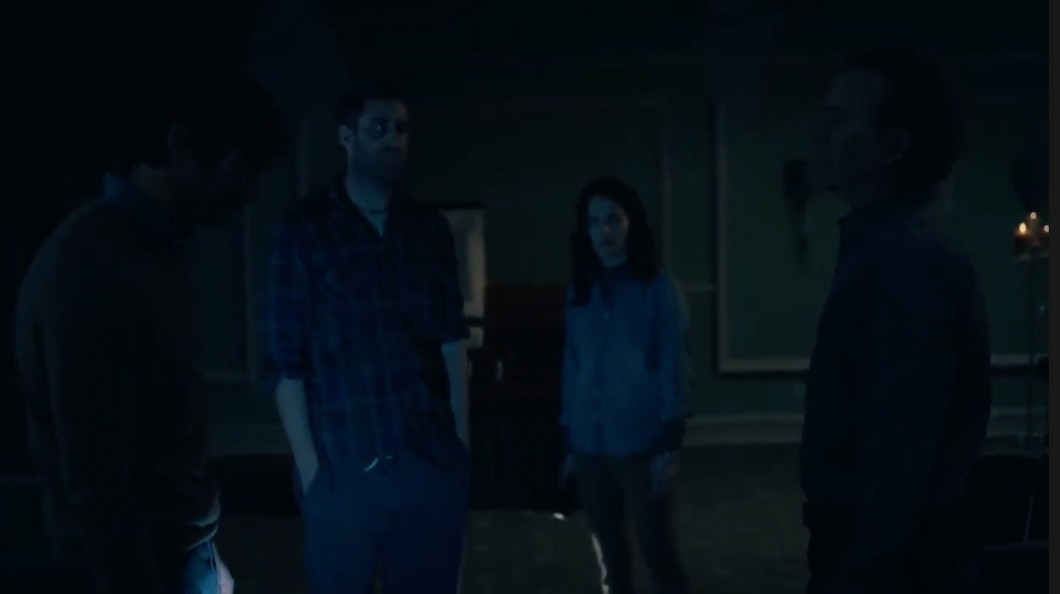Last year's film "1917" brought attention to something that I have always loved as a filmmaker: the long take. A long take is a shot in a movie that goes on for a long time without cutting, resulting in shots that can be 10 to 15 minutes long. "1917" enlisted master cinematographer Roger Deakins to choreograph the camera work, resulting in a film that seems to be two continuous takes. The art of filming long takes requires a master filmmaker to be behind the lens. Everything has to be absolutely perfect in order for a long take to be effective; otherwise, it can just bore an audience and hurt the film in the long run. For me, one of the greatest examples of a long take is episode six of Netflix's hit series, "The Haunting of Hill House."
The show follows the Cranes, a family of seven who are working to renovate a large mansion, known as Hill House, so they can flip it for a profit. They quickly learn that the house is actually haunted, and that the spirits are targeting their family. They quickly flee the house after the spirits cause a violent incident which results in the death of Mrs. Crane. Years later, one of the siblings, Nell, travels back to the mansion and commits suicide under mysterious circumstances. The show switches between the present day and the past, slowly revealing what happened on the night of their departure as the family tries to stop the torment.
The show quickly establishes Nell's suicide, with the first five episodes showing its impact on herself and each of her siblings. The sixth episode follows the family as they reunite for the first time in years at Nell's funeral. Up until the very end of the episode, there are hardly any cuts. Every shot is a long take, with the longest clocking in at almost 15 minutes. The long takes are here to just be a gimmick. They truly enhance the show, and are perfect examples of what a long take can do if done correctly.
The episode does a fantastic job at immersing the audience into the emotion of the episode. The present day scenes that take place during Nell's funeral are contrasted with scenes of a huge storm that took place at Hill House. At the funeral, the family cracks under the weight of Nell's death. This is the first time they've all been together in years, and it's only because one of their family members is dead. All of the faults are brought to light: Nell's twin brother is a drug addict, the oldest Crane sibling, Steve, exploited the turmoil of Hill House to start his writing career, and their dad has been hiding information from them for years. All of this comes to light during Nell's funeral.
The long takes force the audience to be stuck in the middle of the tension. It forces viewers to watch what is going on and refuses to let them look away. You have to watch the family crumble and deal with their demons. And it's truly heartbreaking to watch. Nell has just died in a house that is the cause of the family's pain, and everyone else is at each other's throats. It feels as though the whole family is falling apart, and you're just sitting there on your sofa, watching it all go down. It's a painful moment where a family comes to terms with who they are and what they've done.
Even when you ignore the deeper emotional capabilities of the episode and just look at the technical aspects, it's still an impressive feat of filmmaking. The production used hidden hallways, body doubles, and even a makeshift elevator to sell the effect of the long takes. The scenes that take place in the funeral home show Nell's ghost walking around as her family mourns her. Since they couldn't use any cuts, the production crew had to somehow show Nell's ghost in the same shot as her dead body. To accomplish this, they made an exact copy of her entire body to place in the coffin while Victoria Pedretti, the actress who plays Nell, walked around in ghost makeup.
In one scene set in the past, the production team had to use body doubles to depict teleportation. Hugh Crane, the father of the family, walks through the house to find his wife Olivia. He soons finds her at the end of a hallway upstairs, only to find that hse has disappeared when he reaches her. She somehow teleports to the other end of the hallway, only to disappear again. The crew used a body double, similar to how productions will use stunt doubles, to make it seem like Olivia was teleporting. Actress Carla Gugino would simply hide to make it seem like she disappeared, and then her body double would step into the hallway to make it seem like she had appeared again. The effects can be incredibly simple, but they create a true marvel of cinema.




 man making a coffee lattePhoto by
man making a coffee lattePhoto by  Photo by
Photo by  Photo by
Photo by  Photo by
Photo by 









 Photo by
Photo by 











